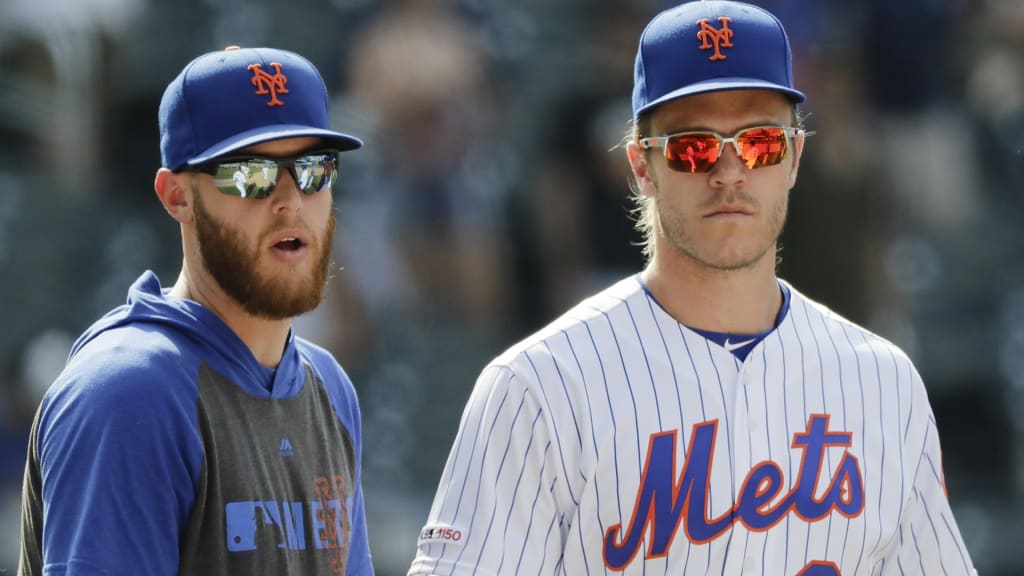
NEW YORK -- So Marcus Stroman is a Met, thanks to a deal few around baseball saw coming. When considering general manager Brodie Van Wagenen’s strategy going forward, it may be best to view the Stroman trade in isolation. The deal isn’t likely to affect the GM much, save for increasing his leverage in talks to unload a different starting pitcher.
Even with Stroman in house, the Mets still appear to be sellers, capable of going in several directions. They shipped Jason Vargas to the Phillies on Monday, and he may only be the first to go. Here are some other potential trades they could make:
RHP Zack Wheeler: Trading Wheeler has always been the Mets' most likely Deadline scenario. The big-picture idea is relatively simple: acquire Stroman, trade Wheeler, lose a bit from the farm system but gain a year of team control in the rotation. If everything goes south, the Mets can still trade Stroman next July to recoup some prospect capital. The Braves remain a strong fit, as do the Brewers, who have been high on Wheeler for years.
To be clear: the Mets don’t have to trade Wheeler. They could take the riskier path of keeping him and extending a qualifying offer this winter, though they’d be on the hook for an expensive salary -- last year’s QO was $17.9 million -- if he accepts. Trading Wheeler now would make the Mets’ offseason decisions a whole lot easier.
In Wheeler’s words: “You hear it and see it. But my concentration is here, doing my job. Whatever happens, happens. You can’t control it. You’re going to try to do the best you can whenever you go out there.”
RHP Noah Syndergaard: The Mets have been itching to trade Syndergaard since last offseason, but they have yet to find a deal tempting enough for Van Wagenen to part with him. San Diego headlines the list of clubs that could stomach trading away multiple elite prospects in a deal for an ace, but so far, it's been a lot of smoke and no real fire. While that could change in an instant, Syndergaard remains more likely to stick around than to go.
In Syndergaard’s words: “I’m more than happy with where I’m at right now, and I look forward to continuing to put on this jersey.”
Todd Frazier: As recently as Sunday, Frazier said he hadn’t been in contact with the front office regarding trades, which makes sense: he’s similar to Vargas in that he's an impending free agent without an obvious market. While Frazier could provide some value as a bench bat for a contender, the Mets also need his defense at third base -- especially now with Stroman, an extreme ground-ball pitcher, taking the mound every fifth day. As such, Frazier is more likely to stay than go.
In Frazier’s words: “If I was younger, I would worry about that type of stuff. I’ve been through it a couple times already. The first time, it was a shock. The second time, it was like, ‘All right.’ Now, if it happens a third time, I’ll just go about my business, just get ready to go to whatever city I’ve got to go to.”
RHP Edwin Díaz, RHP Seth Lugo, RHP Robert Gsellman
Certainly, a robust market exists for Diaz, considering both his talent and the sheer number of teams seeking bullpen help. The Mets aren’t against trading him or any of their other controllable relievers, but they aren’t particularly likely to, either. Dealing Diaz, either by himself or in a package with Wheeler, would mean selling low on a pitcher for whom they paid a high price. Essentially, the Mets would need rival GMs to ignore Diaz’s 4.95 ERA, paying full market value for him and his three remaining years of team control. It probably won’t happen.
By contrast, Lugo’s value couldn’t be higher thanks to a dozen shutout innings in July. While Lugo is about to get expensive as he approaches arbitration for the first time, Mets officials have indicated a reticence to deal players under team control past 2019. They consider both Lugo and Gsellman key members of their 2020 bullpen.
In Diaz’s words: “When I was in the Minors back in Seattle, I would always come up in rumors that they were going to trade me. But now, I’m just calm with whatever happens, happens.”


